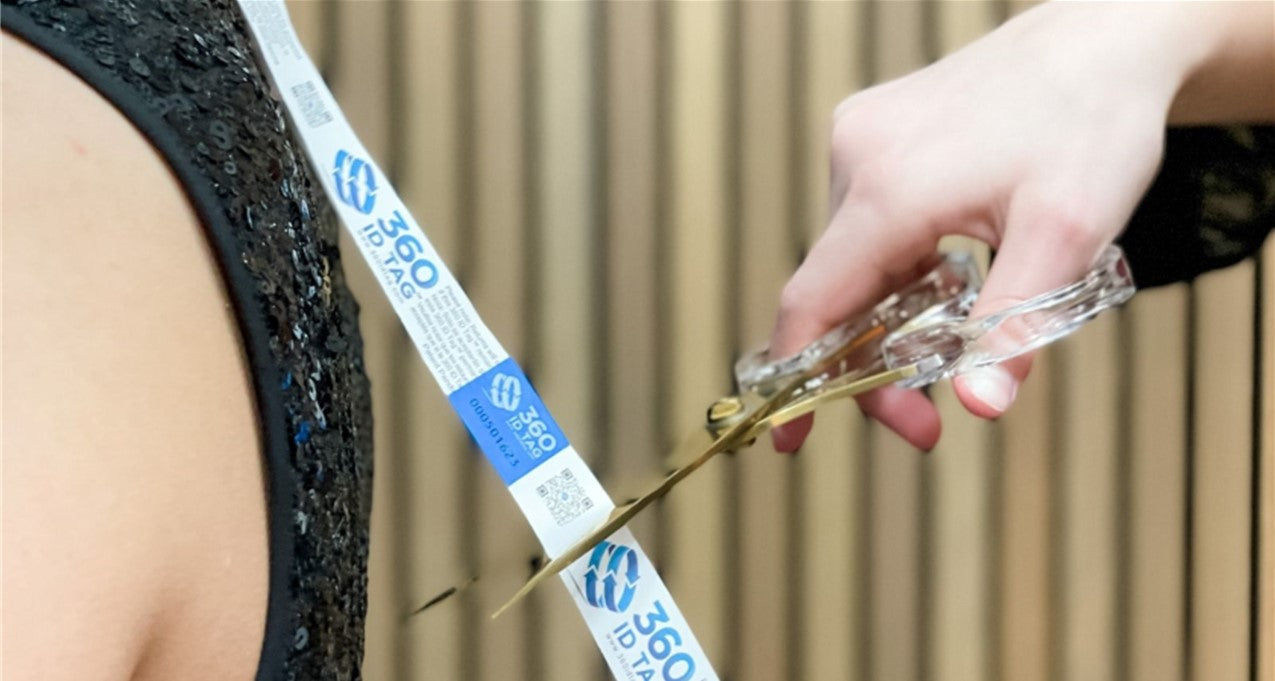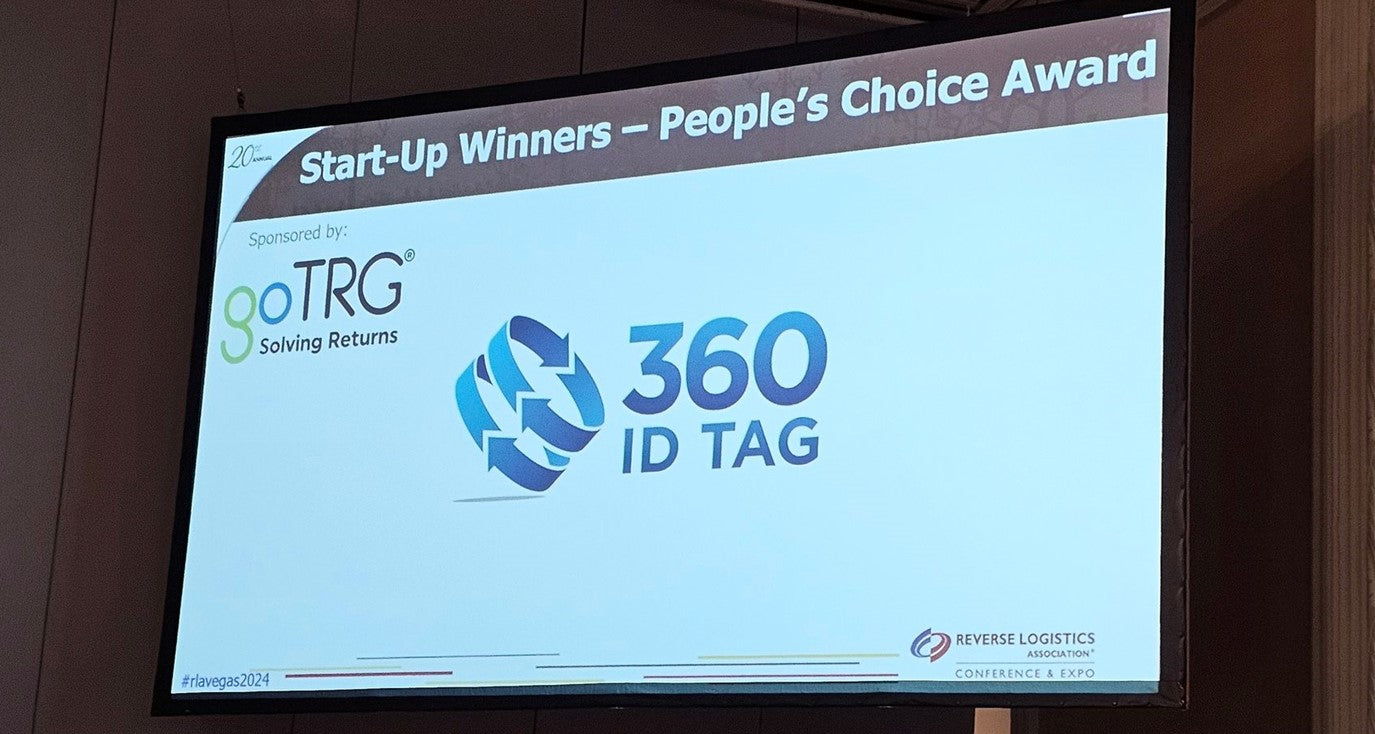
THE TAG BLOG
Understanding wardrobing: how customers exploit return policies
JANUARY 2023
WARDROBING RETURN FRAUD EXPERIENCED BY 50% OF RETAILERS
One goal for e-commerce businesses, including online giants, Shopify stores, and home-based sellers on marketplaces like eBay, Amazon, and Poshmark, is to increase profitability while reducing costs. The global reach of online sales and low overhead costs in comparison to physical stores make for a strong business model. However, the downside of e-commerce's rapid growth, particularly in the wake of the COVID-19 pandemic, is an increase in returns fraud.
In collaboration with the National Retail Federation (NRF), Appriss Retail reports of the approximately $212 billion of returned online purchases, $22.8 billion (10.7%) will be deemed fraudulent. Appriss also noted that 50% of retailers had experienced wardrobing return fraud in the past year. Additionally, when asked what retailers' biggest challenges are in 2022, "return of used goods" topped the list.
While returns fraud also occurs in physical stores, the anonymity of online returns emboldens consumers to behave in ways not typical in person-to-person interactions. There is no risk of having to explain odours, stains or signs of wear when the consumer simply needs to put the item in a box. It is, therefore, easy to understand why wardrobing is garnering attention by loss prevention professionals.
WHAT IS WARDROBING?
Wardrobing, also known as "wear and return," is a form of fraudulent returns in which consumers purchase merchandise, use it for a short period, and then return it for a full refund. This is effectively a form of online shoplifting, as the consumer can use and then return the non-defective item without any financial outlay, taking advantage of free shipping and free returns.
Social events, family photos, outfit-of-the-day social media posts, interviews, and special occasions like proms are just a few everyday examples driving wardrobing return fraud.
WHO ARE THE CULPRITS OF WARDROBING RETURNS FRAUD?
Surprisingly, you probably know someone who is guilty of wardrobing! Contrary to popular belief, it is not just criminals who commit this type of return fraud.
In fact, an alarming 37% of respondents in our August 2020 E-Commerce Returns Survey admitted to returning apparel, shoes, and accessories after using them briefly.
Furthermore, most respondents in the survey do not fit the typical profile of a return fraud perpetrator: 63% are college graduates, 58% make over $50K per year, and 61% are qualified, technical, or managerial employees. These statistics indicate that there is no specific demographic or profile of those committing wardrobing return fraud, making it more difficult to detect.
This highlights the need to understand the underlying motivations and factors driving this form of online shoplifting, as it is both morally questionable and technically illegal.

The serialized tamper-evident 360 ID Tag must be removed before wearing the item in public. Shown here is the Classic Loop Pack - 22mm.
WHY ARE CONSUMERS WARDROBING?
To understand why individuals who do not fit the typical profile of a shoplifter would return worn or used merchandise to retailers, it is essential to consider other possible motivations.
1. One-off occasions
Many individuals may justify returning worn or used merchandise by citing special occasions such as weddings, celebrations, interviews, and events like proms as the reason for their actions. The social pressure to not repeat outfits or the overwhelming desire to wear something new can be a driving force, and justification, behind these instances of wardrobing.
2. #OOTD
The desire to post trendy outfits of the day on social media, #OOTD, is a significant factor driving the phenomenon of "snap-and-send-back." Influencers, who are seeking engagement from their followers, often feel pressure to maintain their status and, as a result, defraud businesses by only wearing items for a photo opportunity and then return them. The idea of wearing something twice is considered unacceptable to them.
3. Real or imagined social pressures
The false reality portrayed on social media, along with the snap-and-send-back culture, creates a pressure to keep up with fashion bloggers and an unwillingness to be seen in the same outfit twice. However, for individuals who do not have access to an unlimited budget, this results in fraudulently 'borrowing' clothing, shoes, and accessories from retailers to maintain their status.
4. Harsh economic times
As previously mentioned, the societal pressures and false realities created by social media, along with the desire to not be seen in the same outfit twice, contribute to the practice of wardrobing. However, it is important to note that the economic reality of maintaining a continually revolving wardrobe is often out of reach for most individuals. As a result, individuals who engage in wardrobing may not be able to afford to keep the products they have worn. It is not surprising that during times of economic downturns, there is often a spike in the number of wardrobing incidents.
5. The no-harm myth of 'friendly’ fraud
Some consumers may justify their habit of wardrobing by believing it to be a victimless crime that goes unnoticed and that businesses can afford to absorb the losses. They may thrive on the excitement of committing the act undetected and view it as a personal thrill. They may also justify their behavior as harmless because they are returning the merchandise.
5. A classic case of buyer's remorse
When an item does not live up to their expectations, some consumers may regret their purchase after wearing or using it. Social media can exacerbate this feeling of buyer's remorse among people, particularly if they do not receive the feedback they were expecting. In such cases, if the buyer can return the item by reattaching tags and coverup evidence of wear or use, they are likely to resort to wardrobing return fraud.
DETECTING WARDROBING
Identifying wardrobing can be difficult as dishonest consumers who engage in this activity often have various methods to conceal their fraudulent behavior. Here are some indicators to be aware of when trying to detect this type of return fraud:
- High number of returns from a single customer
- Evidence of wear or use, such as odors, stains, or alterations
- Missing tags or tags that are attached using different methods, for example, the wrong colored plastic barbs
THE IMPACT OF WARDROBING ON E-COMMERCE
While some may see wardrobing as a harmless act, it can significantly impact businesses by increasing the cost of the merchandise and putting their profitability at risk. This type of return fraud can cause e-commerce retailers to incur additional costs in order to recoup their losses.
1. Loss of honest customer loyalty
When honest customers discover that they have purchased an item that has been previously worn, they may feel outraged and lose trust in the business. This can lead to a loss of customer loyalty and an increase in negative reviews, as disgruntled customers are more likely to share their experience with others.
2. Financial impact
Returned used inventory results in lost revenue, increased markdowns, higher payment processing fees, reduced profits, and lower margins. Additionally, businesses may require additional capital to fund the replacement of merchandise.
3. Rise in labor costs
In order to detect items that have been worn and returned, e-commerce businesses may need to allocate additional labor costs for more thorough inspections, leading to an increase in overall labor expenses.
4. Inventory management and restocking difficulties
Wardrobing can lead to significant reverse logistics challenges, inventory management and complicated restocking procedures for e-commerce businesses. Identifying a used item during the returns processing process is just the beginning, as it cannot be resold as new and must be disposed of or sent to liquidators. Furthermore, this practice can lead to out-of-stock notifications for honest customers.
5. Environmental impact
The inventory management and restocking difficulties caused by wardrobing also contribute to higher carbon emissions and a higher likelihood of worn and returned items ending up in landfills. In the USA alone, it is estimated that 5 billion pounds of returned merchandise is sent to landfills each year. It is ironic that the environmental impact of wardrobing, although caused by consumer behavior, is not aligned with the growing consumer demand for sustainability.
PREVENTION OF WARDROBING
In today's retail environment, where online shopping is on the rise, it is essential to have effective deterrents in place to prevent wardrobing. Instead of implementing stricter return policies that may negatively impact honest customers, businesses can consider implementing physical solutions such as the 360 ID Tag as a more subtle approach to wardrobing prevention.
The 360 ID Tag is an effective tool in preventing wardrobing as it clearly communicates to consumers that the item must be returned with the tag intact in order to be processed. This makes it impossible to wear and return the merchandise. Honest customers appreciate the added protection and those who object are likely attempting to engage in return fraud.
The tag is made of a material that is cut to length and threaded through clothing, shoes, handbags, and accessories. The ends are then joined using a tamper-evident security seal that has a unique serial number. The 360 ID Tag does not have any plastic components or metal pins, which means it can be used on delicate fabrics and fine leather without causing damage.

Thread the 360 ID Tag through merchandise to prevent wardrobing. Shown here is the Classic Loop Pack - 22mm.
E-commerce businesses can continue to deliver good customer service with consumer-demanded flexible return policies and, at the same time, protect their merchandise and profits. The 360 ID Tag still allows the customer to inspect and try on the item at home at their leisure, not wear it out and return it for a full refund. After committing to keeping the item, the buyer removes the return tag with scissors or peels back the tamper-evident security seal.
Furthermore, the 360 ID Tag is easy for customers and employees handling returns to understand, as it clearly indicates if there is any evidence of tampering. This allows for quick and efficient processing of legitimate returns, leading to a smooth and seamless returns experience.
WHAT OUR RETURN FRAUD TAG CUSTOMERS ARE SAYING
In order to combat wardrobing, e-commerce businesses require an easy to implement, cost-effective solution that assures honest shoppers that the item has not been worn and returned. Businesses that have implemented the 360 ID Tag as an anti-wear and return solution have reported an immediate decrease in fraudulent returns such as wardrobing, and have received no negative feedback from honest customers who appreciate the added security measure.
"We love them. Our returns have decreased. Also, we have noticed that they have helped us identify customers that are wardrobing or have stopped since we started using the tags. I'm glad I found you guys!"
Anna, Independent Boutique Owner

Ship your item with a 360 ID Tag attached. Customers can still try the item on with the return tag attached.
Are you interested in learning more about return tags, have questions, or need advice? Feel free to leave a comment below or contact me directly at info@360idtag.com, and I will be happy to assist you.
CHELSEA DUHS - FOUNDER 360 ID TAG
Find the right 360 ID Tag pack for your business
We offer a variety of 360 ID Tag packs, with different combinations of return tag material and tamper-evident security seals. You can also create a custom combination to fit your specific needs. Browse our 360 ID Tag products and select the return fraud solution that best suits the types of products you sell online.
LATEST ARTICLES
Tackling Fraudulent Returns: Survey Confirms Wardrobing as the #1 Culprit
Today, return fraud has evolved into a costly and ongoing challenge for businesses. Wardrobing, where customers buy merchandise, use it briefly, and then return it for a full refund, is particularly disruptive. Secure Authentication Brands recently conducted a survey to understand the impact of return fraud and gather insights from business leaders on their most pressing concerns. Here's what we found and how our anti-return fraud tagging solution is helping companies turn the tide.
Read moreRevolutionizing E-Commerce Returns With an Anti-Wardrobing Tag
At the recent Reverse Logistics Association's 2024 Startup Competition, 360 ID Tag stood out among a field of innovative contenders, showcasing their mission to combat return fraud, specifically the insidious practice of "wardrobing." Founder Chelsea Duhs delivered a compelling pitch that resonated with both the audience and the judges.
Read moreE-commerce's New Secret Weapon for Return Fraud Prevention
Is your e-commerce store plagued by return policy abuse over the long holiday shopping and return season? Extended return windows until the end of January and unscrupulous consumers engaging in wear and return fraud have businesses looking for solutions. Learn how to prevent wardrobing and other forms of return fraud with secure anti-return fraud tags.
Read more


